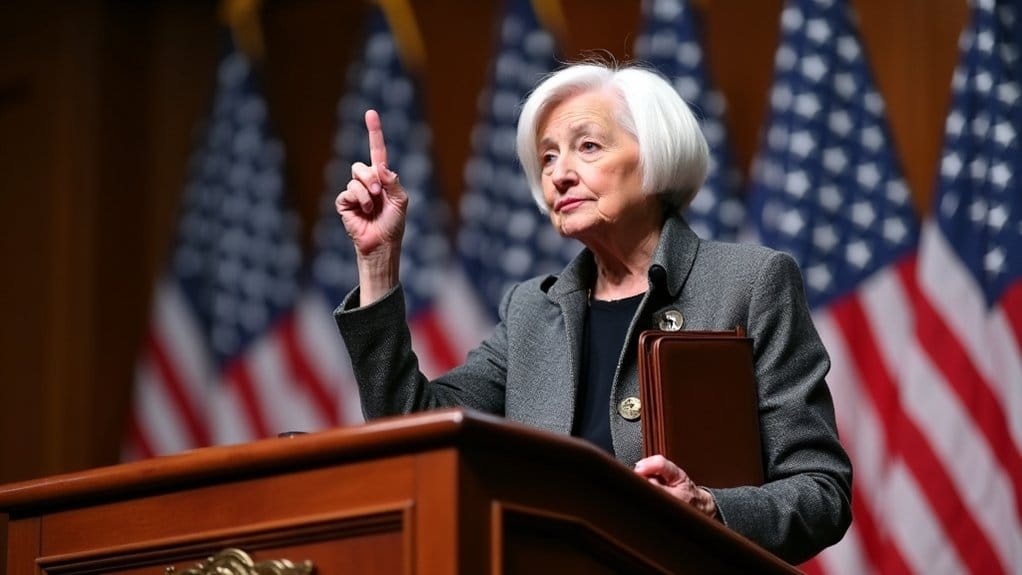Treasury Secretary Scott Bessent isn’t mincing words about U.S. debt obligations. Despite looming fiscal cliffs and a massive $36.1 trillion debt ceiling, he remains adamant the nation won’t default. The Treasury’s been pulling financial gymnastics since January through “extraordinary measures,” but time’s running short. With credit rating agencies already throwing shade and Congress dragging its feet, Bessent’s bold declaration faces some serious reality checks in the months ahead.

Standing firm against mounting market fears, Treasury Secretary Scott Bessent boldly declared the United States “is never going to default” on its debt obligations – even as the government inches closer to a fiscal cliff. The defiant stance comes as the Treasury Department deliberately keeps the exact default date, known as the “X-date,” under wraps to ignite a fire under Congress’s collective behind.
Since January 21, 2025, Treasury has been pulling financial rabbits out of its hat through “extraordinary measures” to avoid smashing into the $36.1 trillion debt ceiling. Republicans in Congress have proposed a $4 trillion increase to address the growing debt concerns. But even magic tricks have their limits. These creative accounting maneuvers are expected to run dry sometime between mid-July and early October, depending on who you ask.
Treasury’s bag of financial tricks is running low, as extraordinary measures to dodge the debt ceiling near their inevitable end.
The Congressional Budget Office is hedging its bets with an “August or September” timeline, while the Bipartisan Policy Center’s crystal ball shows anything from mid-July to early October. Meanwhile, Bessent is pushing Congress to act before they jet off for their cushy summer break in mid-July. Bipartisan negotiations continue around the clock to prevent economic disruption.
The stakes couldn’t be higher. All three major credit rating agencies have already knocked the U.S. down a peg from its top-tier status – a reality check that apparently hasn’t fully sunk in on Capitol Hill. If the government actually defaults, it would trigger chaos in credit markets and send Treasury borrowing rates through the roof. Recent data shows large-cap stocks have averaged 10.3% annual returns since 1926, but a default could devastate these historical gains.
Congress is supposedly working on legislation that would hike the debt ceiling by a cool $5 trillion, but the clock is ticking. Without action, the Treasury will soon face an impossible choice: which bills to pay and which to stiff.
Bessent’s unwavering confidence in avoiding default might seem admirable, but the math is getting uglier by the day. Once the Treasury hits that X-date, it can’t issue new debt and will quickly burn through its remaining cash.
For now, they’re watching tax receipts like hawks and crossing their fingers that Congress will finally do its job before it’s too late.





